The End of The Monroeville Mall and Why Some Are Hoping George Romero's Zombies Will Rise Again
sign the petition to save The Monroeville Mall where "Dawn of the Dead" filmed
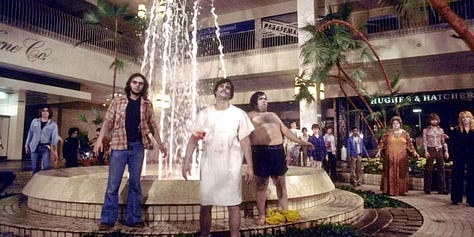
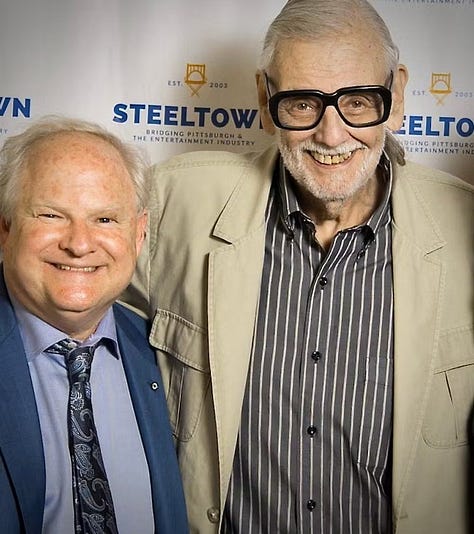
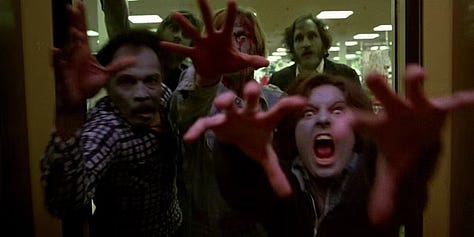
At the beginning of this year, it was announced that The Monroeville Mall outside of Pittsburgh was sold for $34 million dollars. Once one of America’s premiere shopping venues with its own indoor skating rink, the mall is famous to horror fans around the world as the location of George Romero’s Dawn of the Dead. In 1978, it was the setting where the undead ran amok looking for flesh to devour and enjoying a hedonistic zombie shopping experience satirizing our consumer-obsessed culture. When the mall’s sale was first reported, the buyer was anonymous and I had high hopes about who that buyer might be. In 2005, I had co-hosted the red-carpet Pittsburgh premiere of Romero’s Land of The Dead, for Quentin Tarantino flew in, describing Romero as “the father of the American independent film movement” and insisted on taking a pilgrimage to visit the mall which he considered sacred ground.
I should confess that when I first moved back here, I had never seen a George Romero movie because of 1) an aversion to scary movies and 2) because my mother had appeared in Romero’s Hungry Wives in the 1970s which I avoided watching for fear my mother was naked in it. As a teenager, I had gone to dailies with her where I witnessed an actress playing a witch drop her coven robe revealing her bare breasts at which point my mother asked me to go get her a pack of cigarettes.
I first met George Romero as an adult asking him to be part of the Steeltown Entertainment Summit at the Fred Rogers Studio at WQED which had grown out of an op-ed I had written entitled “Pittsburgh’s Next Industrial Revolution Entertainment.” The piece asserted the region’s greatest export was no longer steel, but talent which had come from Pittsburgh and gone on to make billions in the film and TV industry in places like New York and Hollywood. Philanthropist Audrey Hillman Fisher read the piece and that led to her urging my co-founder Ellen Weiss Kander and myself to create the non-profit Steeltown Entertainment with the mission of helping Pittsburgh become a player in the entertainment industry. Ellen recruited her friend Ann Lewis, whose husband Eddie was the CEO of Oxford Development the company which built The Monroeville Mall. Shortly after my op-ed was published, in February 2003, Pittsburgh and America lost its greatest neighbor, Fred Roger. Trying to honor Fred’s legacy, Ellen, her friend Maxine Lapiduss, and myself went about assembling some of the city’s most successful film and television expatriates including Chicago director Rob Marshall, Village Roadshow President (The Matrix Training Day) Bernie Goldmann, Lizzie Maguire creator Terri Minsky, actor/director Jamie Widdoes (Animal House, Two and a Half Men) and talent manager Eric Gold (Jim Carrey, Vince Vaughn, Ellen DeGeneres) to persuade city leaders to help the region realize its potential to become a player in the entertainment industry. I was assigned to go meet with George to ask him to be a part of this.
I went to George’s house in Shadyside which turned out to be a few blocks from the townhouse off Walnut Street where my brother Tom and I had grown up. In person George was the opposite of his terrifying movies— gentle, soft-spoken and thoughtful with a wry sense of humor. He called the social commentary that elevated his horror films above the others of this genre “the stuff” and though he was considered a legend by many in the film business, George was modest about his accomplishments. In fact, at the time we met, he was a discouraged as he had hit a dry spell and was struggling to get backing for his films. Though he had made 14 films here, he was particularly convinced there was no way anyone in Pittsburgh would bet on his talent.
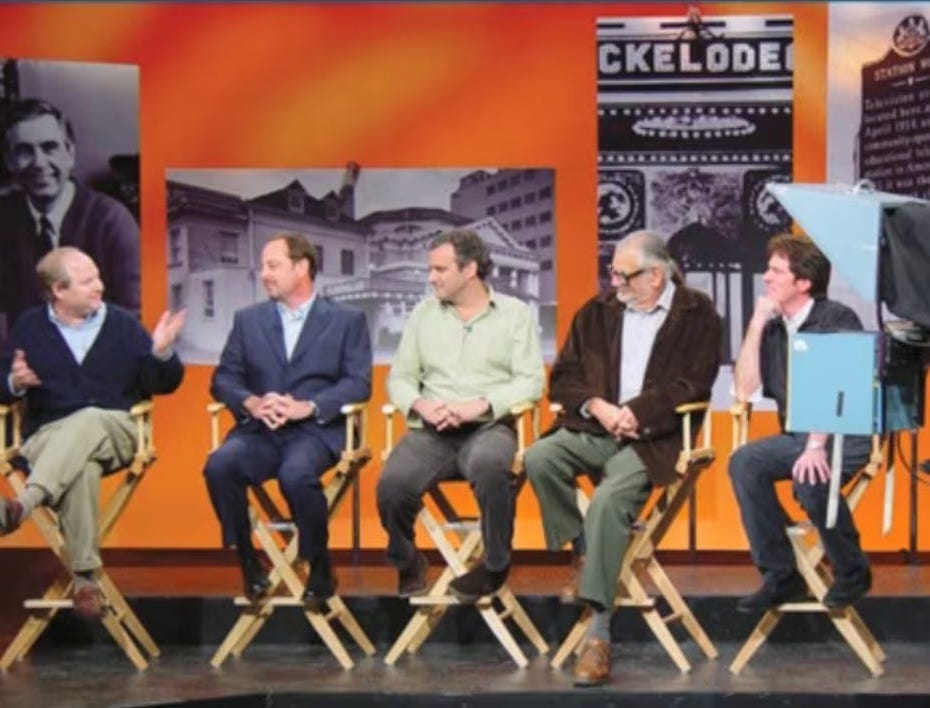
Months after our summit which the Post-Gazette called “the greatest assembly of talent and hustle this town has ever seen” and which was nominated for a Mid-Atlantic Emmy, I got a call from my friend Bernie Goldmann saying he had read George’s latest script, and that his partner Mark Canton who I had known when he was President of Warner Brothers, wanted to make the movie. The catch was even though George and Bernie wanted to make the movie in Pittsburgh, the financiers had discovered filming in Canada with its economic incentives would be several million dollars cheaper. Ellen, Anne Lewis, myself and other Steeltown board members tried to raise the money to make shooting in Pittsburgh an even playing field. Working with Bob O’ Connor, at the time the Governor’s representative, we spoke to leaders of The Allegheny Conference and Audrey even got her parents Henry and Elsie Hillman on a call trying to get the resources to keep our zombies in Pittsburgh. Despite all these good efforts, we fell short, and as I commented while making My Tale of Two Cities at the time, a documentary about Pittsburgh’s attempt to reinvent itself after the loss of its steel industry, even The Dead were leaving Pittsburgh.
George would spend his last decade making films in Toronto. Tragically, Ellen Weiss Kander would pass away way too young, and George agreed to come back to receive the Elly pioneer award we had named in Ellen’s honor. Born in Brooklyn, George had come to Pittsburgh to attend Carnegie Mellon, then Carnegie Tech, where he was studying art and drama. He would drop out before graduating after meeting Pitt student Richard Ricci who like he was obsessed with film, and together they formed a production company Latent Image with producer Russ Streiner. One of their first gigs was filming a “Picture Picture” segment for Mister Rogers Neighborhood where Fred gets a tonsillectomy. (If you watch it, you can tell George directed as it is scarier than anything else Fred did.). Inspired by Chilly Billy Cardille’s Chiller Thriller that showed scary movies on Saturday nights, George and ten of his friends formed Image Ten and decided to make their own low-budget horror movie. Night of the Living Dead would bo introduce the world to George’s version of the modern-day slow walking, flesh eating zombie. George cast his friend Duane Jones, a Pitt alum who would become the first-African American to play the lead in a feature horror movie. In 1968, this “little gritty film from Pittsburgh” as the New York Times would describe it, would resonate with audiences who in addition to the scare, appreciated its social commentary on the anti-war and civil rights movements.
While the film would make tens of millions of dollars as it went viral at midnight screenings around the country, George and the filmmakers would receive none of the profits because of a clerical error after the film was not copywritten due to a clerical error. George could have gone out to Hollywood and cashed in, but instead he remained in Pittsburgh making his films independently from The Crazies, a prescient film about town struck by a mysterious virus to sports documentaries, including one with Franco Harris which NFL Films would use as part of an updated Night of the Living Steelers.
Presenting the award at the Elly’s was Oscar-winning Special Effects artist and Walking Dead director Greg Nicotero who had gotten his start on George’s Day of the Dead, starring Lori Cardille, the talented daughter of Bill Cardille. Greg was hesitant at first as George had expressed displeasure at the fact that the zombies on Walking Dead walked too quickly, violating the rules he had laid out for his fictional creation. But when I checked, George was delighted when he heard that Greg was flying up from Atlanta, and the evening became a reunion with many Pittsburghers George had worked with coming out for the occasion including Lori, Russ Streiner, and documentarian Tony Buba who got his start on George’s vampire movie Martin.
I had heard George was sick when he agreed to accept his Elly Award, and on July 16, 2017, he passed away. I kept in touch with George’s widow Suzanne Desrocher Romero who he had met in Canada and introduced her to my colleague Professor Adam Lowenstein, a scholar of horror films who had shown Night of the Living Dead at his Bar Mitzvah. Though touted by filmmakers from Jordan Peele to Guillermo Del Toro as their inspiration, George had doubts that his work would live on. Suzanne, Adam, and I met with Kornelia Tancheva, the director of Pitt’s University Library System who saw the value in George’s work and arranged for the University to acquire the George Romero archives. They have been used by scholars from around the world, and by a group of students and myself who made a documentary about George Romero and the early years which premiered during the pandemic.
A couple of years ago I went out to Los Angeles with program officers from the R.K. Mellon Foundation and introduced them to Eric Gold, whose first experience on a film set was being an extra on Dawn of the Dead. Eric and his partner Jimmy Miller co-founded Mosaic Media one of the most successful talent agencies in the business after they both began as teenagers help Eric’s mother Thelma book the comedy room at The Holiday House across from the Monroeville Mall, a nightclub which had stars as big as Frank Sinatra and Elvis perform there. Still rooting for their hometown to become a bigger player in entertainment, Eric and Jimmy suggested Pittsburgh should build on George’s legacy by creating a horror museum/multi-media interactive attraction that could do for Pittsburgh what the Rock N Roll Hall of Fame has done in Cleveland in terms of attracting tourists. A grant was given to the George A. Romero Foundation which Suz established to explore the possibility.
I was disappointed that it was not Quentin Tarantino or Eric Gold who bought The Monroeville Mall, but Walmart. It is almost poetic how this ultimate symbol of American consumer culture now has plans to tear down the place where George Romero satirized how even monsters who die continue shopping. There is now a petition to save The Monroeville Mall noting its historical significant because of Dawn of the Dead being filmed there. Some may scoff of the idea of turning this location into some sort of horror amusement park and it may sound like something out of a movie, but last year my wife Natalie and I visited Dollywood and it is extraordinary to see the hundreds of millions of dollars that attraction has driven to her once sleepy hometown of Pigeon Forge, Tennessee. And the fact that Dollywood just bought Kennywood may be a sign. It would be a true tribute to the legacy of George Romero if the zombies he created brought in millions of visitors to this region helping bring George’s adopted hometown, once declared dead after the loss of its steel industry, back to life.
Below is a short trailer my students made where Quentin Tarantino says that the A in George A Romero, stands for “An “F&%-in genius.”
By the way, I finally saw Hungry Wives, which turned out to be just the title which a soft-core porn distributor came up with hoping to sell tickets. The film is now called Season of The Witch and is actually a powerful feministic statement of the 1970s. And for the record, my mother remains clothed throughout.
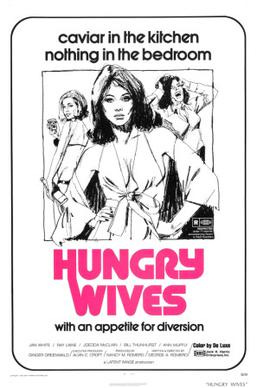
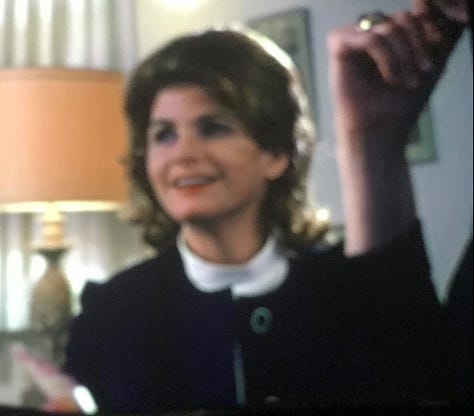
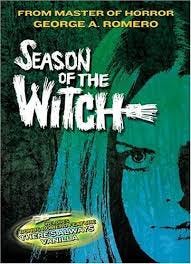
Have your own memories of The Monroeville Mall and seeing George Romero’s movies, or the man himself, would love to hear them. And remember to sign that petition to save The Monroeville Mall (maybe we can at least get Walmart to pay tribute in some way to its legacy.)




Another terrific story Carl and as always, well told.